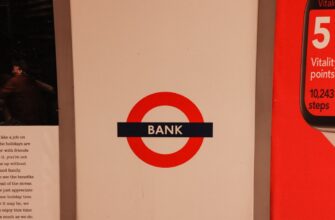In the decentralized world of cryptocurrency, controlling your digital assets means prioritizing security and privacy. Knowing how to backup your crypto wallet without KYC (Know Your Customer) verification empowers you to maintain anonymity while safeguarding your funds against loss or theft. This guide walks you through the entire process using non-custodial tools, ensuring your financial sovereignty remains intact.
## Why Backing Up Your Wallet Is Non-Negotiable
Cryptocurrencies operate on a “no second chances” principle. If you lose access to your wallet—whether through device failure, hacking, or simple human error—your funds vanish permanently. Unlike traditional banks, crypto has no recovery hotline. A proper backup acts as your lifeline, allowing restoration on any device. For privacy-focused users, avoiding KYC during this process prevents third parties from linking your identity to wallet addresses or transaction histories.
## Understanding KYC and Privacy Implications
KYC requires submitting government ID, proof of address, and other personal details to centralized entities like exchanges. While intended to combat fraud, it creates vulnerabilities:
– **Data breach risks**: Centralized databases are hacker targets.
– **Tracking exposure**: KYC ties your identity to blockchain activity.
– **Geographic restrictions**: Some regions lack KYC-compliant services.
Non-custodial wallets (e.g., MetaMask, Exodus) bypass KYC entirely, letting you generate and backup keys independently. This method is legal for self-custody in most jurisdictions.
## Step-by-Step Backup Tutorial Without KYC
Follow these steps to securely backup any non-KYC wallet:
1. **Choose a Non-Custodial Wallet**
– Install privacy-focused options like Electrum (Bitcoin), MetaMask (Ethereum), or Trust Wallet (multi-chain).
– Avoid wallets requiring ID verification during setup.
2. **Generate Your Seed Phrase Offline**
– Disconnect from the internet before creating a new wallet.
– Write down the 12-24 word recovery phrase shown on-screen. Never screenshot or email it.
3. **Create Physical Backups**
– Use pen and paper for primary copies. Store in two secure locations (e.g., home safe + bank deposit box).
– For enhanced durability, engrave phrases on metal plates or use specialized crypto steel backups.
4. **Test Restoration (Crucial Step!)**
– Uninstall/reinstall the wallet app on a clean device.
– Select “Restore Wallet” and enter your seed phrase.
– Verify balance and transaction history match.
5. **Add Encrypted Digital Backups (Optional)**
– Only if needed: Encrypt the phrase using VeraCrypt or a password manager like KeePass.
– Store encrypted files on air-gapped USB drives—never cloud services.
## Top Security Best Practices
– **Never share phrases**: Treat them like cash.
– **Avoid digital traces**: No photos, texts, or cloud notes.
– **Multi-location storage**: Mitigate fire/flood risks.
– **Beware of scams**: Fake wallet apps may steal phrases. Download only from official sites.
## Common Backup Mistakes to Avoid
– Storing phrases digitally without encryption
– Using custodial wallets (e.g., exchange-hosted) that control your keys
– Skipping restoration tests
– Writing phrases on easily damaged materials like thermal paper
## FAQ: Backup Crypto Wallet Without KYC
**Q1: Is a seed phrase backup really secure?**
A: Yes, if stored physically. It’s mathematically impossible to crack a 12-word phrase. Digital storage increases risk unless strongly encrypted.
**Q2: Can I backup a hardware wallet without KYC?**
A: Absolutely. Devices like Ledger or Trezor generate offline seed phrases—just write them down during setup. No ID required.
**Q3: What if I lose my backup?**
A: Without the phrase, funds are irrecoverable. This underscores the need for multiple secure copies.
**Q4: Are paper backups enough?**
A: For most users, yes. Add metal backups for fire/water protection if holding significant value.
**Q5: Does restoring a wallet reveal my identity?**
A: No. Restoration uses only your seed phrase—no personal data is transmitted or verified.
By mastering this KYC-free backup process, you ensure asset security while preserving financial privacy. Remember: In crypto, you are your own bank. Guard your keys accordingly.








